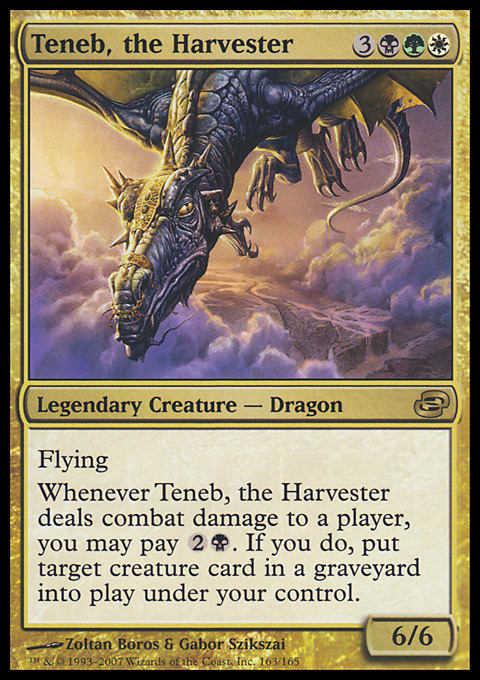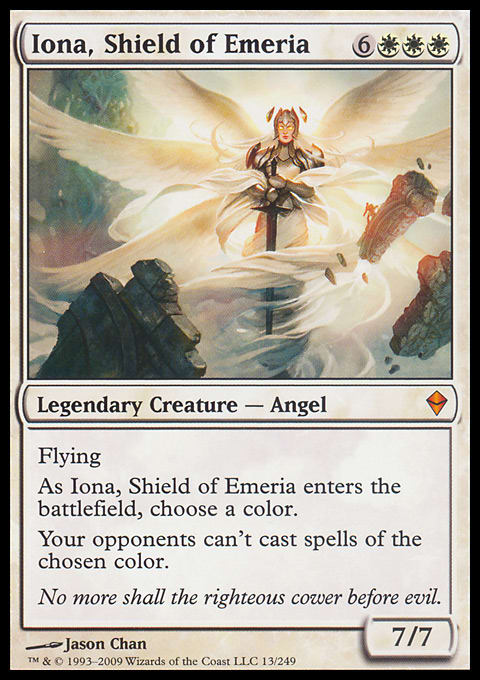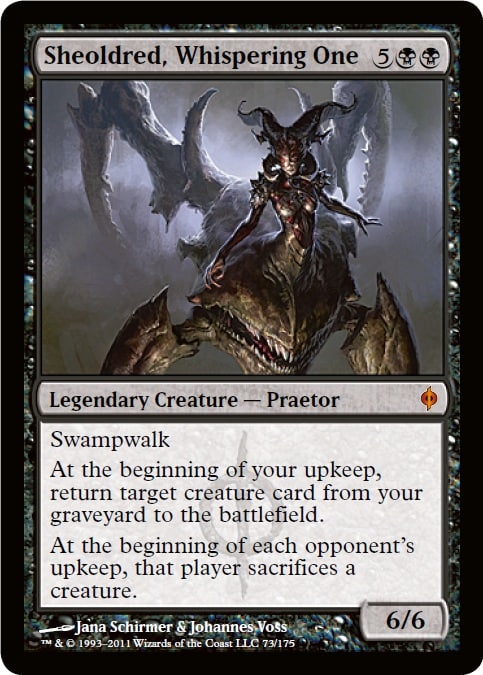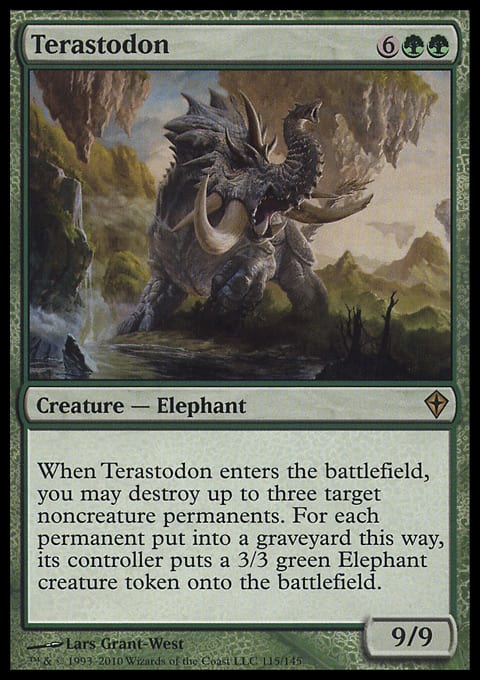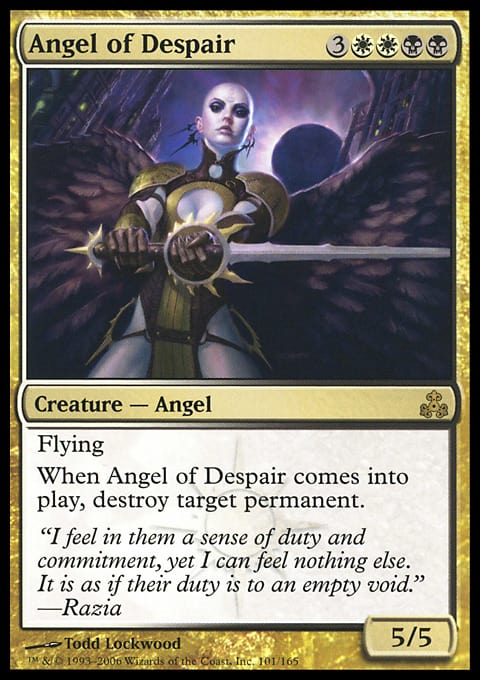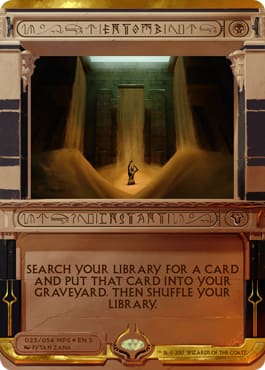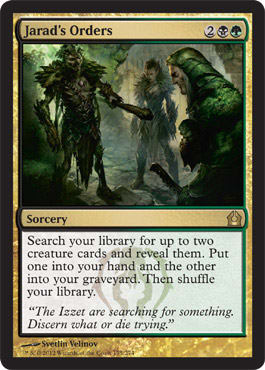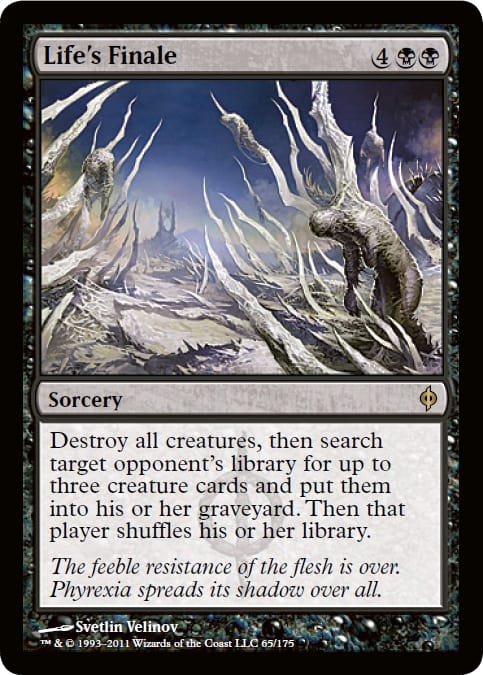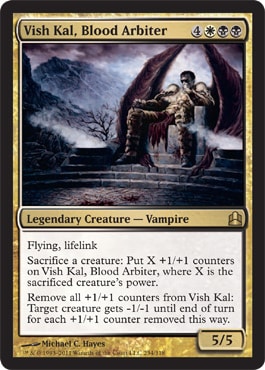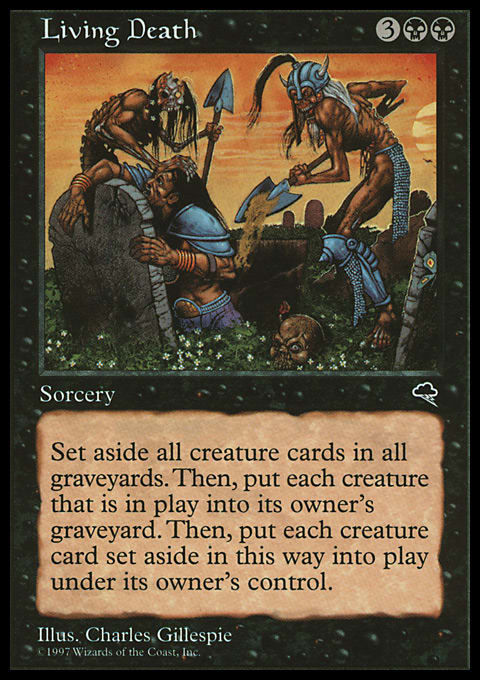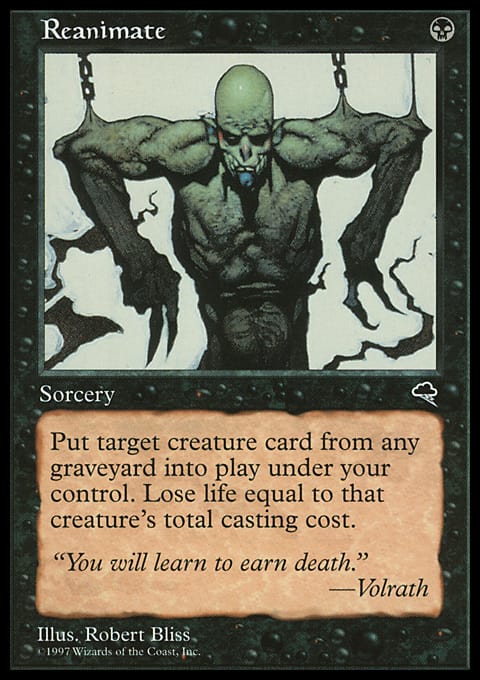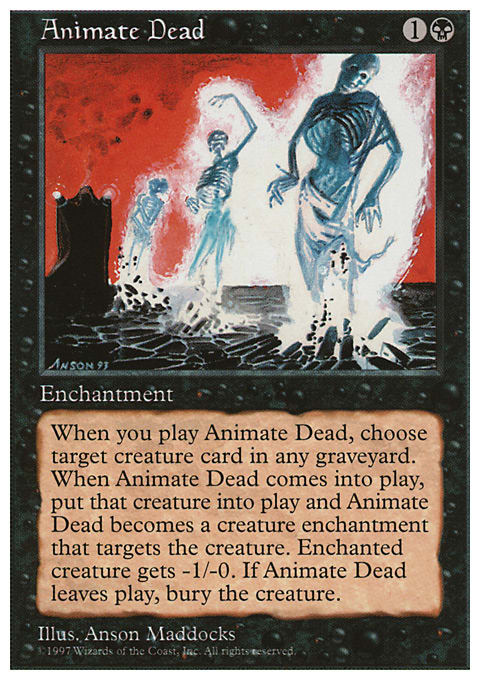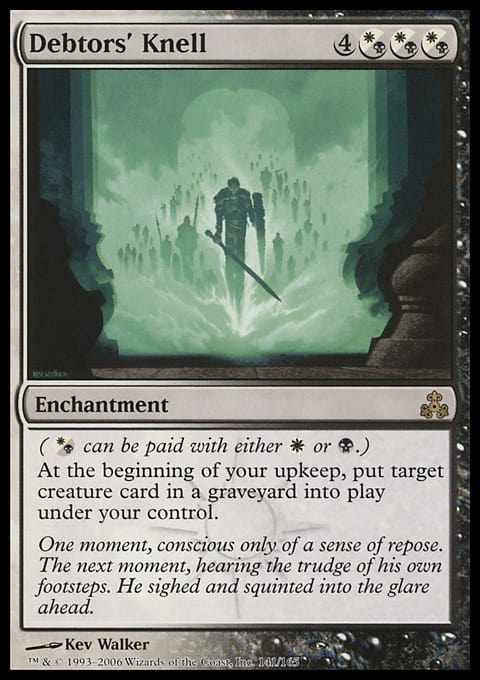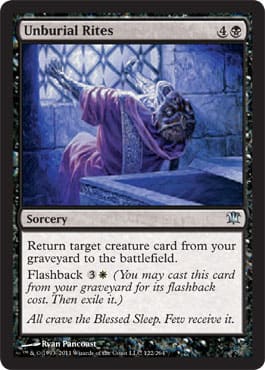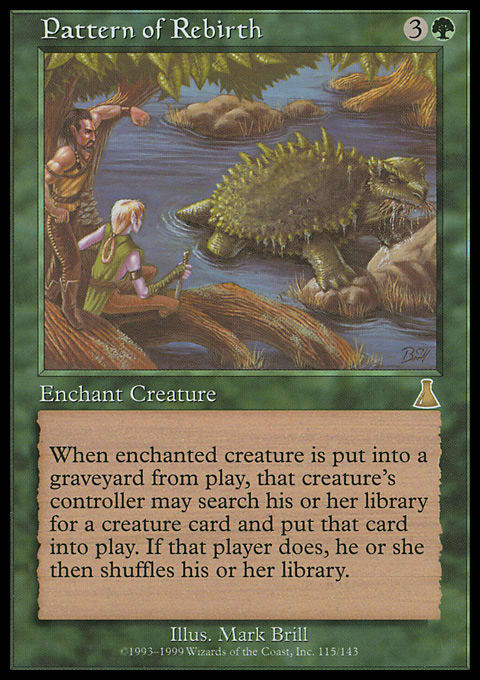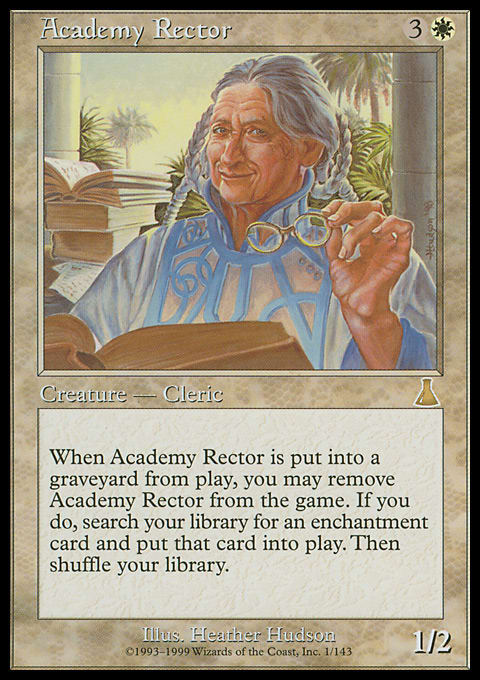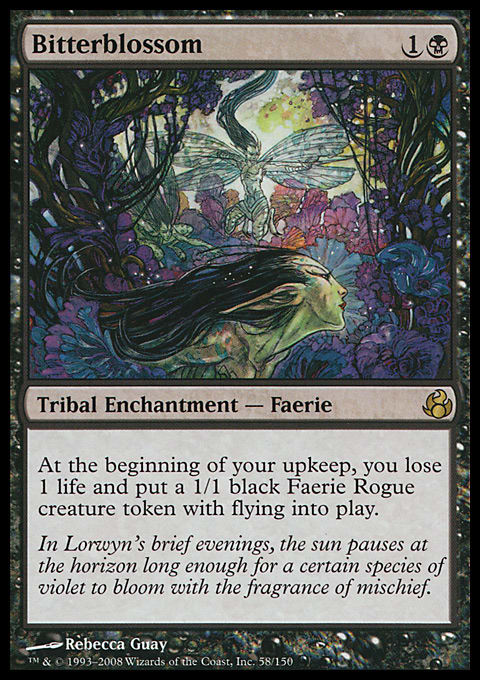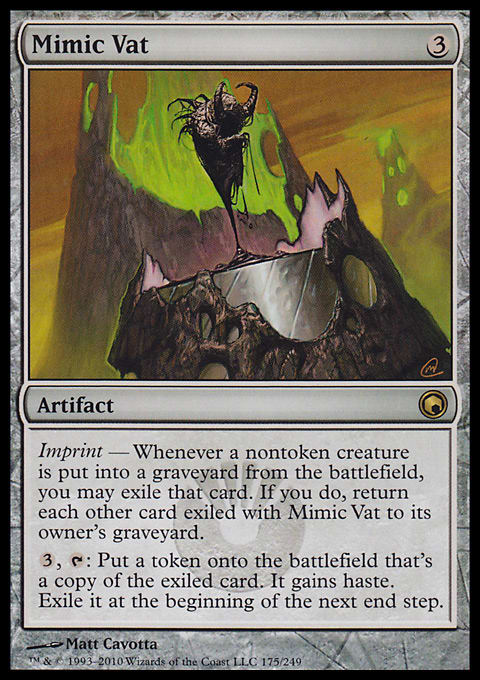Let’s get right to it: This is a Commander primer for the classic reanimator strategy using Teneb, the Harvester. There’s a pantheon of commanders you could employ in this approach, each with its own purview, so let’s examine what Teneb provides that the others do not—starting with his colors.

Junk (the wedge of black, green, and white) is an ideal triplet for manipulating dead creatures. Blue and red have graveyard interactions, too, but mostly concerning instants and sorceries. Junk stays unanimously interested in creatures. There are strong options within its colors—Chainer, Dementia Master, for instance, who’s much faster than Teneb with the actual reanimating—but incorporating all three opens up design.
Junk gives us:
- Black – The capital of graveyard interaction and a glut of creature removal
- Green – Creature preoccupation and mana ramp/fixing. The former gives us tutors and a few choice fatties, while the latter keeps our mana base competitive.
- White – Home of the best board wipes and runner-up on graveyards. It and black are often the core of reanimator strategies.
Of Junk’s four legendary creatures, two could serve our purposes:
Right away, we see that they want different decks.
Karador, Ghost Chieftain is cheaper to cast (if you’re doing it right) and doesn’t need connection in combat to use his main ability. Additionally, you can use it on the first turn you cast him. By contrast, Teneb weighs a hefty 6 mana and can’t even begin to attempt his main ability for an entire turn (unless you give him haste). He has to break through to do his thing, and flying is minimal evasion. Karador clearly wins for activation.
But what happens then? With Karador, you have to pay the cost of whatever you’re reanimating. This encourages a deck packed with tiny, dredge-friendly creatures dumped en masse into your ’yard. Teneb, however, requests a flat and modest fee for anything you want, no matter how dramatic. Cost isn’t an issue for targets. What’s more, he pulls from anywhere: “A graveyard,” is such glorious language.
This seems like the point of reanimator: circumventing casting costs by sneaking through the grave.
Teneb may be cumbersome, but he enables fatties–operatic entrances at discount price. Sedris, the Traitor King offers something similar, but he prevents reuse; Teneb allows a recursive, calculated toolbox to call on and recycle for different situations. We’ll need a strong tutor package, a suite of sac outlets, the aforementioned ramp and board wipes, and, of course, the fatties themselves. Let’s do the fun part first.
Fatties
The exact lineup is flexible—the above just a possible slice—and wholly depends on your meta. I keep Iona, Shield of Emeria in the binder because interaction is fun, but lockouts are competitive plays, and you may want her around. It’s up to the pilot which fatties to include in the toolbox.
As a principle, each choice should fill a clear and particular role that performs in an expected context. Enters-the-battlefield triggers guarantee performance, and death triggers help reload the ’yard. Complementary abilities streamline plays.
Key categories include:
- Spot removal (Angel of Despair, Terastodon, Archon of Justice)
- Drain/finishers (Kokusho, the Evening Star, It That Betrays)
- Graveyard tech (Sheoldred, Whispering One, Vish Kal, Blood Arbiter, Mikaeus, the Unhallowed)
- Locks (Iona, Shield of Emeria; Vorinclex, Voice of Hunger; Yosei, the Morning Star).
A healthy balance lets you cycle on the fly, adjusting to changing conditions and answering new threats. Once the fatties land, looping them through zones reiterates their triggers, amplifying value. Feed Kokusho into Vish Kal, Blood Arbiter—twice if you have Mikaeus, the Unhallowed—and swing for nasty life-gain. Put Angel of Despair or Terastodon in the Mimic Vat. Continue the procession with Sheoldred.
Teneb is there if you need him, but half the time, you won’t until midway through the game. The deck packs enough one-shot and mass resurrections to get along without him. I tend to hold off until I need that extra push, at which point, he floats in with that imperious glare and smacks the most vulnerable player. I’ve probably board-wiped repeatedly by then, so someone has a creature worth taking even if I don’t.
Note: This strategy is vulnerable to graveyard hate—more so, perhaps, than Karador’s, since each card is so critical—but redundancy, intelligent timing, and a hate suite of our own keeps exile at bay.
Tutors
Surgical creature selection requires swift and numerous tutors, preferably straight to the graveyard. We also want discard capabilities for when we draw into fatties too soon. Survival of the Fittest, for this reason, is the best card in the deck by far. It’s reusable gasoline that both zone-sculpts and fetches, all for a comical 2 mana. If you see it in your opening hand with at least one green mana, you keep. If you have Demonic Tutor under similar conditions, you keep and search for Survival.
Likewise, Insidious Dreams uncorks your hand like a supernatural laxative. Have a clog of inopportune fatties? Dump them where they belong, and stack your future draws.
There are also Jarad's Orders for whatever and Sakura-Tribe Elder, Buried Alive for synergistic trios, Entomb for instant-speed shenanigans, and Life's Finale for putting an opponent’s best creatures into Teneb’s sight.
Sacrifice Outlets
It’s important that creatures die on command (i.e. at instant speed) for two reasons: trigger repetition and protection.
For one, the tools often function when they leave or enter the battlefield. They’re swinging in the meantime, but that purpose is secondary. We want their flagship triggers whenever the need arises.
Additionally, exiling effects such as Path to Exile—not to mention the unspeakable Final Judgment and False Prophet—castrate us. They straight-up remove our genitals, leaving us with a deck full of board wipes and ramp. We’re similarly vulnerable to clownish blue players and the Mind Control family, which preys on our hard work. Sacrifice your fatties in response, and punish the attempt next turn.
Reanimation Spells
We know that Teneb is slow, so no deck he commands should rely on his ability. We want a few one-shots to get us there without him.
Living Death is perhaps our strongest: It doubles as a board wipe, allowing us to clear the field while establishing full presence. Sure, our opponents bring their dead back, too, but no one should have filled their ’yards like ours; we’ve been building toward this moment all game. Similarly, Twilight's Call trades the board wipe for instant-speed capability. It’s a costly move, but it’s baller in response to graveyard hate. People with a Tormod's Crypt on the way are often quite poor at discretion.
Reanimate, Animate Dead, and Unburial Rites make the cut for efficiency, either via casting cost or flashback.
Debtors' Knell, by contrast, costs as much as Sheoldred but replicates our commander’s ability every turn for free. It can mean the game if left unanswered.
Good Stuff and Fancy Plays
Finally, a handful of trickery and Commander staples helps to grease the wheels.
Pattern of Rebirth cheats fatties into play more efficiently than most of the deck. Our suite of sacrifice outlets and creatures with death triggers make it easy to execute, enabling instant-speed deployment. Sacrifice the Aura’s wearer in response to attacks, insert It That Betrays, and assign death as a blocker.
Academy Rector does the same for enchantments. Debtors' Knell is her most dramatic target, but Greater Good, Survival of the Fittest, and even Oblivion Ring can bring you what you need.
Bitterblossom, while not ostensibly related to reanimator, is simply excellent value. Chump-block with tokens while ramping, sacrifice a token to Victimize, draw a bunch of cards with Skullclamp, hard-lock with Contamination, and/or constantly trigger Aura Shards.
Thoughtseize and Despise steal targets for our commander.
The List
Bear in mind that many things belong in multiple categories.
"Teneb’s Toolbox"
- Commander (0)
- Fatties (12)
- 1 Kokusho, the Evening Star
- 1 Angel of Despair
- 1 Terastodon
- 1 Vorinclex, Voice of Hunger
- 1 Sheoldred, Whispering One
- 1 It That Betrays
- 1 Iona, Shield of Emeria
- 1 Yosei, the Morning Star
- 1 Rune-Scarred Demon
- 1 Vish Kal, Blood Arbiter
- 1 Mikaeus, the Unhallowed
- 1 Archon of Justice
- Tutors (6)
- 1 Survival of the Fittest
- 1 Demonic Tutor
- 1 Insidious Dreams
- 1 Buried Alive
- 1 Entomb
- 1 Jarad's Orders
- Reanimation (8)
- 1 Reanimate
- 1 Unburial Rites
- 1 Living Death
- 1 Twilight's Call
- 1 Animate Dead
- 1 Victimize
- 1 Crime // Punishment
- 1 Debtors' Knell
- Board Wipes (7)
- 1 Damnation
- 1 Day of Judgment
- 1 Wrath of God
- 1 Akroma's Vengeance
- 1 Life's Finale
- 1 Decree of Pain
- 1 Pernicious Deed
- Spot Removal (9)
- 1 Attrition
- 1 Aura Shards
- 1 Vindicate
- 1 Maelstrom Pulse
- 1 Krosan Grip
- 1 Return to Dust
- 1 Oblation
- 1 Beast Within
- 1 Oblivion Ring
- Tech (11)
- 1 Greater Good
- 1 Phyrexian Arena
- 1 Sylvan Library
- 1 Academy Rector
- 1 Pattern of Rebirth
- 1 Thoughtseize
- 1 Despise
- 1 Mimic Vat
- 1 Bitterblossom
- 1 Contamination
- 1 Skullclamp
- Ramp (6)
- 1 Farseek
- 1 Skyshroud Claim
- 1 Cultivate
- 1 Kodama's Reach
- 1 Sakura-Tribe Elder
- 1 Yavimaya Elder
- Mana Rocks (8)
- 1 Chromatic Lantern
- 1 Gilded Lotus
- 1 Coalition Relic
- 1 Darksteel Ingot
- 1 Selesnya Signet
- 1 Golgari Signet
- 1 Orzhov Signet
- 1 Sol Ring
- Lands (32)
- 1 Command Tower
- 1 Godless Shrine
- 1 Overgrown Tomb
- 1 Temple Garden
- 1 Woodland Cemetery
- 1 Isolated Chapel
- 1 Sunpetal Grove
- 1 Windswept Heath
- 1 Verdant Catacombs
- 1 Marsh Flats
- 1 Tainted Field
- 1 Tainted Wood
- 1 Razorverge Thicket
- 1 Temple of the False God
- 1 Evolving Wilds
- 1 Phyrexian Tower
- 1 High Market
- 1 Miren, the Moaning Well
- 1 Boseiju, Who Shelters All
- 5 Swamp
- 4 Plains
- 4 Forest














